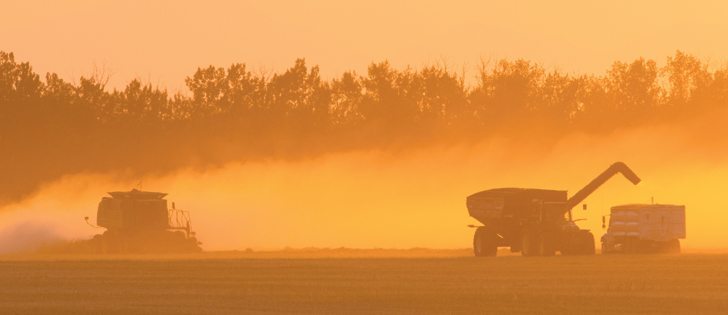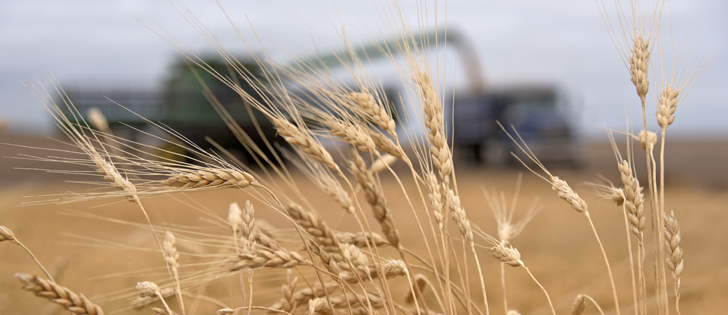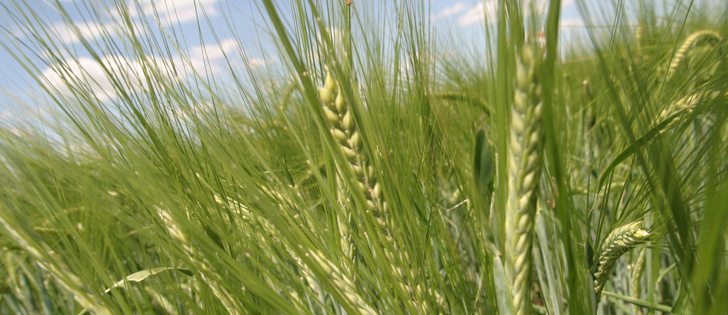Southern Saskatchewan peas suffered from early season dry weather and recent wet, windy weather has damaged barley
With the prairie harvest already underway, there could be conflicts between what combine yield monitors are telling farmers and official crop production estimates.
Statistics Canada releases a crop forecast Aug. 21 but it is based on farmer surveys conducted in the last week of July and the first few days of August.
Early reports from southern Saskatchewan harvest suggest the first harvested pea fields are producing yields well below expectations although there is the potential that later-developing fields may be better.
Concerns are also emerging over the quality of early seeded barley crops damaged by recent wind and rain.
Read Also

Critical growing season is ahead for soybeans
What the weather turns out to be in the United States is going to have a significant impact on Canadian producers’ prices
“It’s still very early … but from what we’ve been hearing, pea yields just aren’t where we had hoped they’d be,” said Shannon Friesen, crop management specialist with Saskatchewan Agriculture.
“For the most part, the pea crop looked (good) … but once producers actually started cutting into it, the yields were maybe half of what they were expecting or in some cases, maybe even a third, compared to last year.”
In many parts of southern Saskatchewan, hot dry weather throughout the growing season slashed pea yields. Many pea crops flowered for only a short period and produced small pods.
In some areas, late season rain complicated the situation, adding excess moisture at a time when yields had already been established and quality was a more immediate concern.
Friesen said the quality of early harvested peas and lentils is highly variable, depending on how much rain was received in late July or early August.
Average pea yields are likely to improve as harvest progresses, she added.
In general, the earliest harvested pea fields were those most affected by lack of moisture.
“For the most part, those early seeded (pea) crops just didn’t have enough moisture to help them fill properly,” she said.
As of Aug. 10, about 19 percent of the province’s total pea acreage had been harvested, including about 25 percent of pea fields in southeastern Saskatchewan and about 40 percent in the southwest.
Early reports last week also suggested variable quality in early harvested barley.
In many areas, late season rain combined with strong wind and high humidity caused lodging and chitting.
Lodging damage was variable throughout the province but quality losses are expected in many regions. Rob Stone, a malt barley producer from the Davidson, Sask., area, said excess rain in late July and early August turned what was looking like a great barley crop into one that may not meet malting specs.
“The barley crop overall looked better a couple of weeks ago than it does now,” said Stone, who was taking off Copeland barley on Aug. 13.
“The wind and the rain and everything else pushed it down fairly good so it’s quite a challenge to cut some of this stuff right now.”
Unlike many parts of the province, Stone’s farm had ample moisture throughout the growing season and had the potential to produce a crop with high quality and above average yields.
A five-inch downpour in late July in his area followed by another inch and a half in early August resulted in lodging, chitting and some flooded acres.
Despite the recent weather challenges, Stone said there’s a decent chance that his crop will sell as malt.
As of late last week, an estimated one or two percent of Saskatchewan’s barley acres had been harvested so overall quality has yet to be determined.
Jill McDonald, executive director with SaskBarley, said recent weather has affected barley quality in some areas.
But with the 2015 harvest still in its infancy, it’s far too early to draw conclusions about overall crop quality or the direction of domestic barley markets.
“With a lot of the rain and the wind that we’ve had in the past few weeks, there is the potential for (quality) problems but at the moment, there’s been very little of the crop harvested,” she said. “Honestly, I think it’s too early to really comment too much on quality.”
McDonald said growing conditions have been variable in Saskatchewan this year, with some growers battling drought and others dealing with flooding and lodging.
“I think we’re going to see (barley) markets react in the next few weeks as more information on the quality of the crop comes in,” she said in an Aug. 13 interview.
“At the moment, we’re hearing that feed barley markets are remaining relatively strong so it is a viable option if barley doesn’t make malt.”
“But as far as the actual malting barley market, it’s really going to depend on the quality that we’re going to see in the next few weeks.”


















